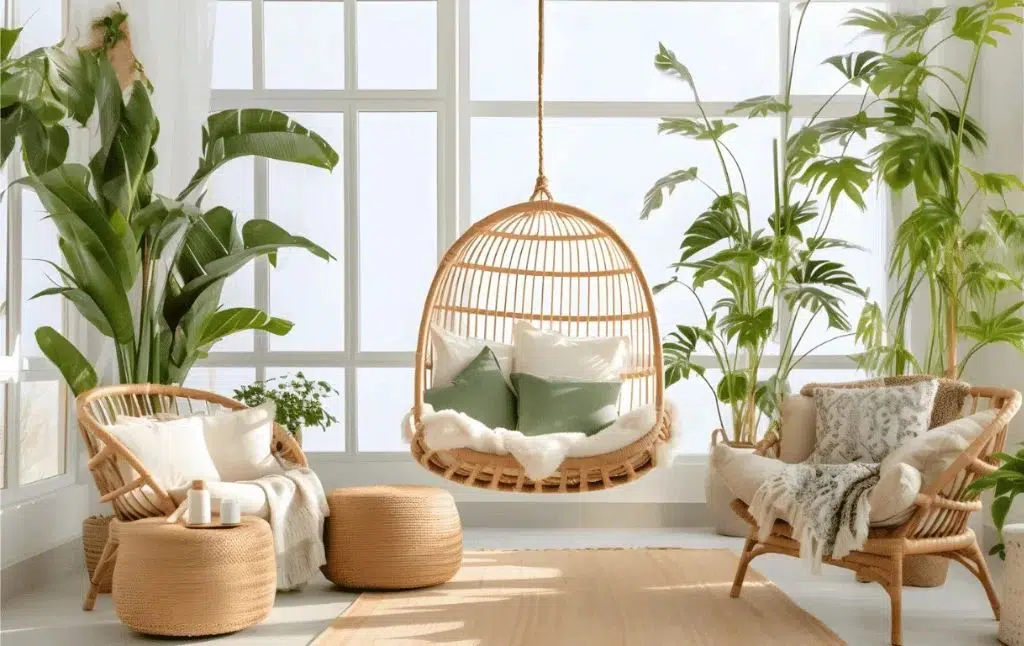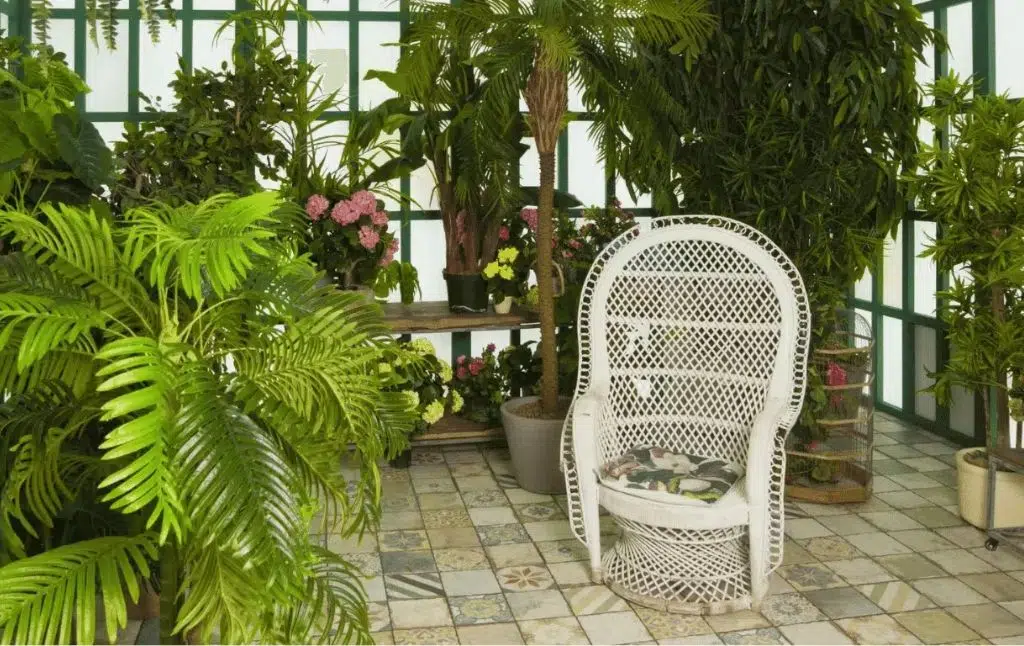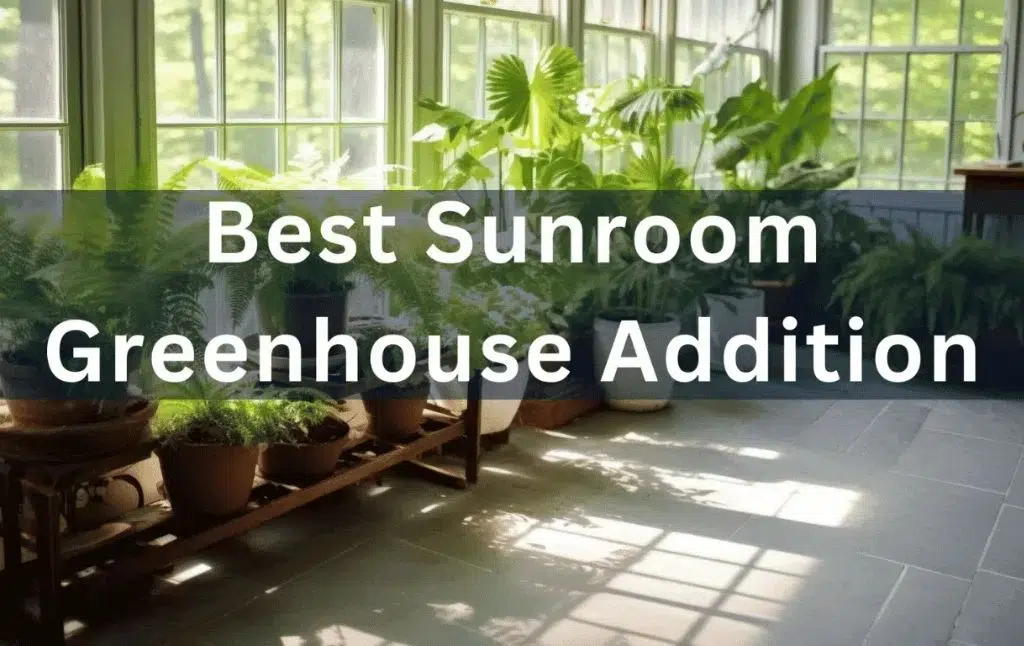Introducing a sunroom greenhouse addition to your home is not just about escaping the winter blues; it’s about adding enduring value to your living space and enriching your overall quality of life. A sunroom greenhouse addition is a brilliant way to breathe new life into your home while connecting with nature year-round. This unique and versatile living space combines the beauty of the outdoors with the comfort of your indoor living area.
Whether you’re a plant enthusiast looking to nurture a green oasis or seeking a cozy spot for relaxation and entertainment, a sunroom greenhouse addition offers the perfect solution. So before you embark on this journey, you’ll face a delightful dilemma: choosing between a sunroom, solarium addition, or greenhouse. These structures share a common goal of bringing you closer to nature, yet they possess unique characteristics that set them apart. So, let’s embark on a journey of exploration to help you make an informed decision that will transform your home and your life.
What is a Solarium?
A solarium is a type of enclosed living space. It’s typically attached to a building like a solarium house, designed to admit a large amount of sunlight. It is characterized by the extensive use of glass walls and a glass roof, allowing natural light to flood the interior. Solarium rooms are often used for various purposes, such as lounging, dining, or even as a space for growing plants. They offer a bright and inviting atmosphere and are commonly used to enjoy the outdoors while being sheltered from adverse weather conditions.
What is a Sunroom Addition?
A sunroom addition, also known as a sunroom, sun porch, or solarium, is a home extension designed to provide a transitional space between the indoors and the outdoors. They are versatile living spaces that can be used for relaxation, entertaining, indoor gardening, or as an extension of the existing living area. Sunroom additions offer a way to enjoy outdoor views and natural light while remaining protected from the elements.
What is a Greenhouse?
A greenhouse is a specialized structure designed for the cultivation of plants, particularly in a controlled environment. It is typically constructed with walls and roofs made of transparent materials, such as glass or plastic, to allow sunlight to enter while trapping heat. Greenhouses create a microclimate suitable for growing various plants, including flowers, vegetables, and exotic species, by regulating factors like temperature, humidity, and ventilation.

How do we make a sunroom greenhouse addition?
Creating a greenhouse environment within a sunroom can be a rewarding project that allows you to grow plants year-round while enjoying the benefits of natural light and climate control. Contemporary Home Construction offers sunroom greenhouse addition service. Here are the steps, on how we make a greenhouse in a sunroom:
Choose the Right Sunroom
Plan the Layout
Determine the layout for your greenhouse area within the sunroom. Consider the available space, the types of plants you want to grow, and any specific requirements they may have.
Select Appropriate Plant Shelves and Containers
Choose sturdy, rust-resistant shelving units or tables that can support the weight of your plants and pots. You can also use hanging baskets, wall-mounted shelves, and various containers to maximize space.
Install Proper Ventilation
Proper ventilation is crucial to prevent overheating and humidity buildup. Depending on the size of your sunroom greenhouse addition, you can use roof vents, side vents, or exhaust fans to maintain a stable environment.
Provide Temperature Control
Consider installing a heating system for the winter months and cooling systems, like fans or shading, for the summer. A thermostat or climate control system can help maintain the ideal temperature for your plants.
Ensure Adequate Humidity
Depending on the plants you’re growing, you might need to increase humidity levels. Using a humidifier or placing trays of water near your plants can help maintain optimal humidity.
Select Appropriate Lighting
While sunlight is the primary source of light for your sunroom greenhouse addition, you may need supplemental artificial lighting, especially during the dark winter months. You can provide additional light with LED grow lights.
Choose Suitable Plants
Plants that are well-suited to your sunroom should be selected. Consider factors like light requirements, temperature, and humidity preferences when choosing your plants.
Implement a Watering and Drainage System
Install a drip irrigation system or use watering cans with long spouts to efficiently water your plants. Make sure your shelves or tables have proper drainage to prevent water accumulation.
Monitor and Maintain
Regularly inspect your plants for pests and diseases. Prune and re-pot as needed and adjust your climate control systems to maintain the optimal conditions for your plants.
Decorate and Personalize
Add decorative elements like garden décor, seating, and pathways to create an inviting and cozy atmosphere in your sunroom greenhouse.

- Sunroom: A sunroom is primarily designed to let in natural light and create an indoor space that feels like the outdoors. Sunrooms often have large windows or glass walls to maximize light. They may have lightweight construction and are often not fully insulated like the main house. Sunrooms are designed to provide a bright and airy space for enjoyment, often with a focus on natural light and aesthetics.
- In addition: An addition is an extension to a house that can serve various purposes, such as adding extra living space, a bedroom, a bathroom, or any other functional room. House additions are constructed using the same materials as the existing house, making them more structurally integrated and fully insulated to meet the same building standards as the rest of the home.
- Greenhouse: A greenhouse is primarily designed for the cultivation of plants in a controlled environment. It has transparent walls and roofs to maximize sunlight and trap heat, creating an ideal environment for plant growth. They often have single- or double-layered glazing materials (glass or plastic) for insulation. Greenhouses are dedicated to plant growth, with features like benches or tables for potted plants, temperature and humidity control systems, and proper irrigation and drainage.
Different types of Greenhouses
- Production Greenhouse
Production greenhouses are typically much larger and more spacious than home greenhouses. They are designed to accommodate large-scale commercial or agricultural plant cultivation. Production greenhouses are primarily used for commercial purposes, such as growing crops, flowers or other plants for sale. They are often found on farms or at nurseries and serve as a significant part of the business’s operations. These greenhouses are typically more robust and designed to withstand heavy use.
- Home Greenhouse
Home greenhouses are much smaller and more compact in comparison to production greenhouses. They are designed for personal use or as an extension of a home garden. Home greenhouses are primarily used by homeowners or gardening enthusiasts for personal plant cultivation, starting seeds, and extending the growing season. Home greenhouses are typically simpler in structure, often featuring aluminum or wooden frames and lightweight glazing materials.
In conclusion, the sunroom greenhouse addition to your home is a remarkable investment that offers a multitude of benefits. This versatile space seamlessly combines the beauty of the outdoors with the comfort of indoor living, creating a tranquil oasis in the heart of your home. Not only does it allow you to enjoy the natural world year-round, but it also provides numerous opportunities for gardening, relaxation and family gatherings.
If you are looking for a reliable and efficient solution, please get in touch with us today for a free estimate. Visite our Profile

